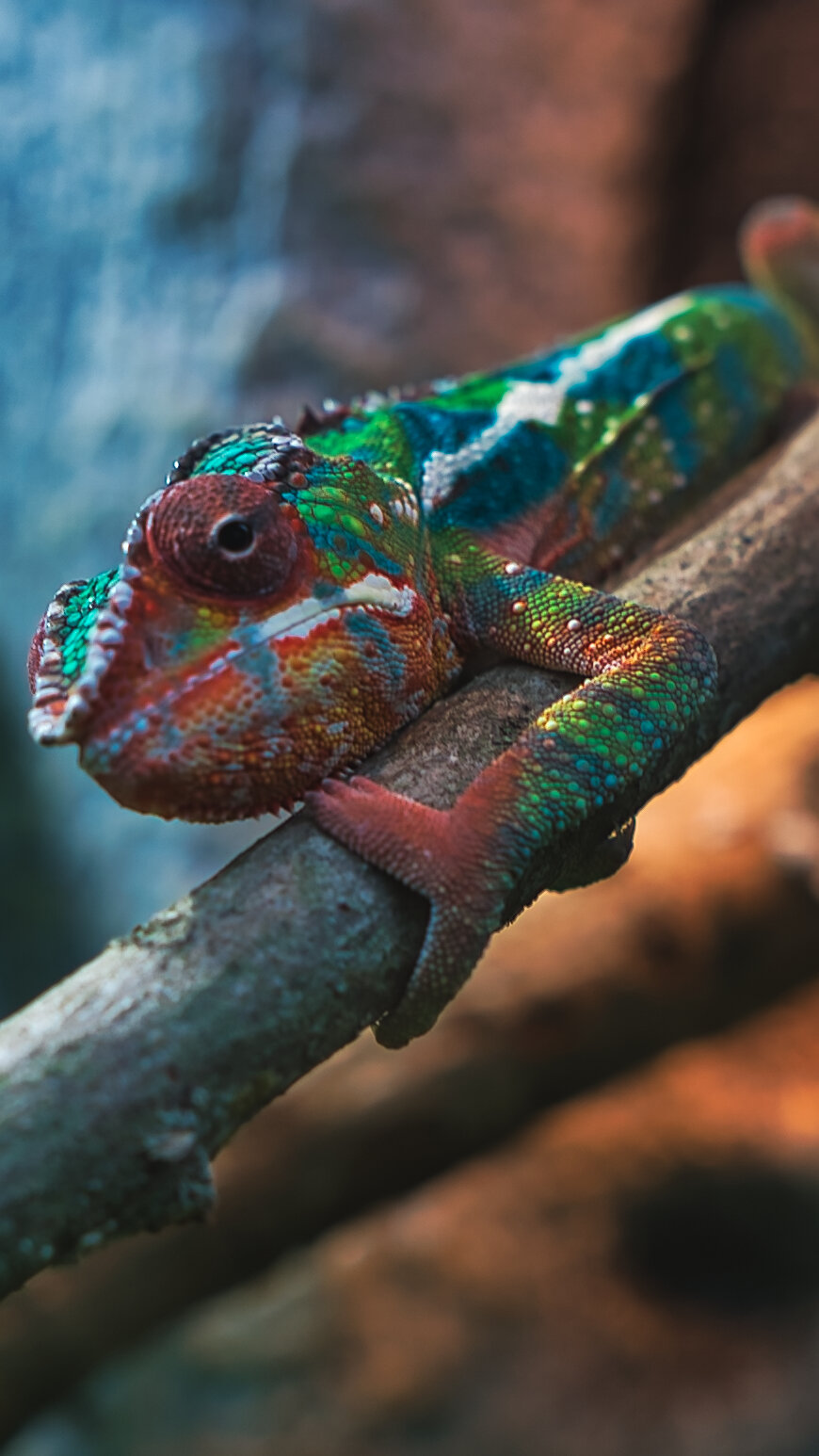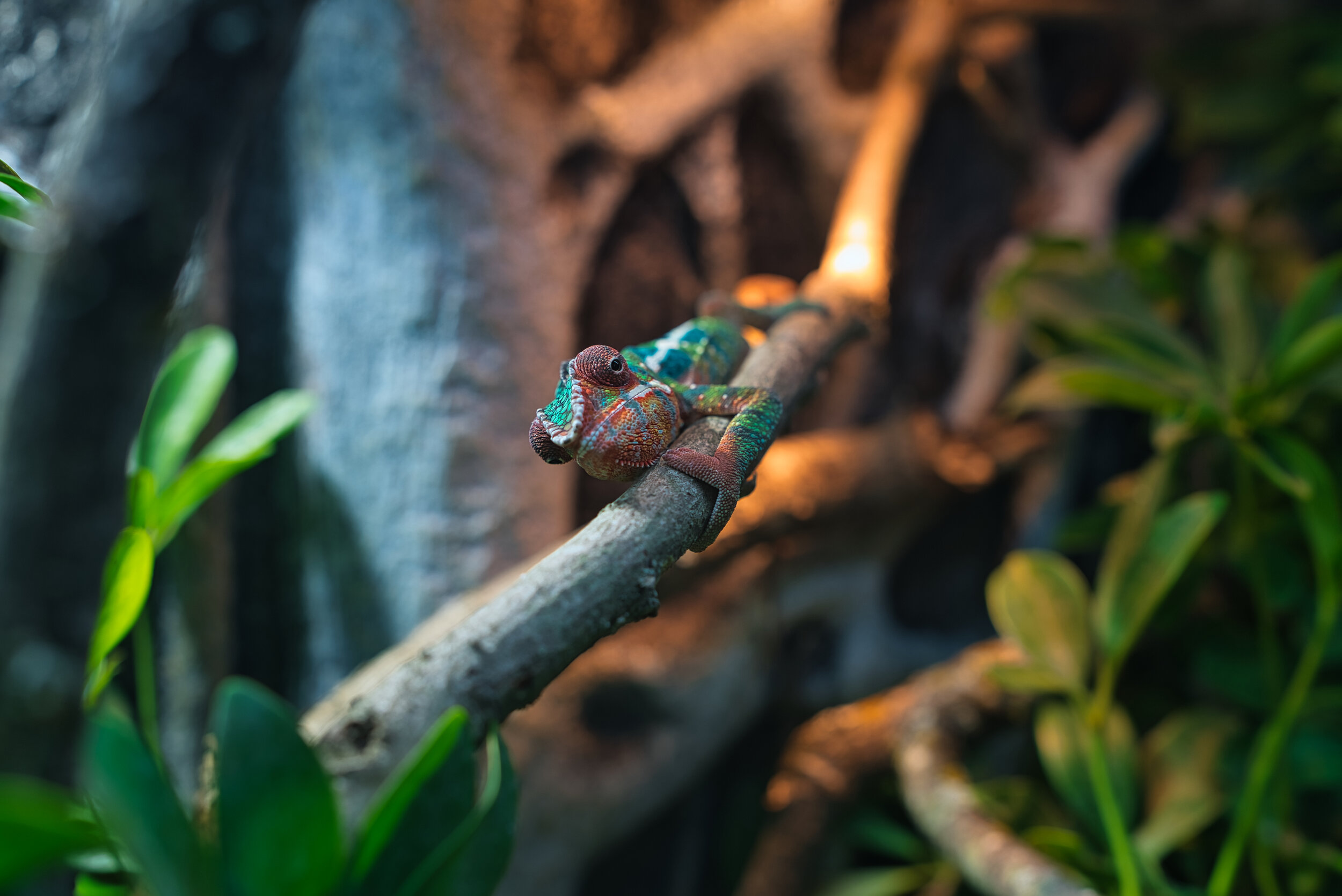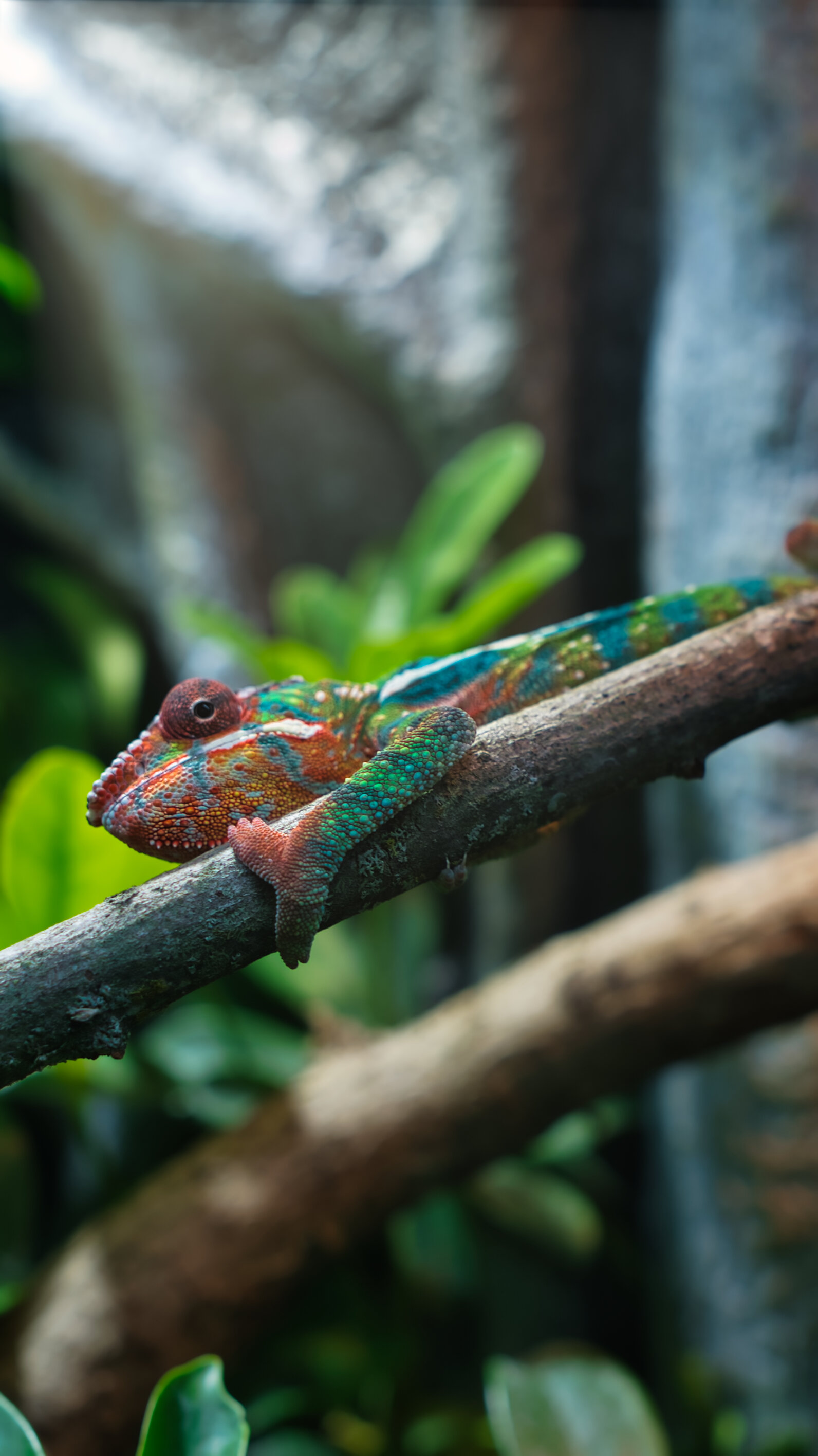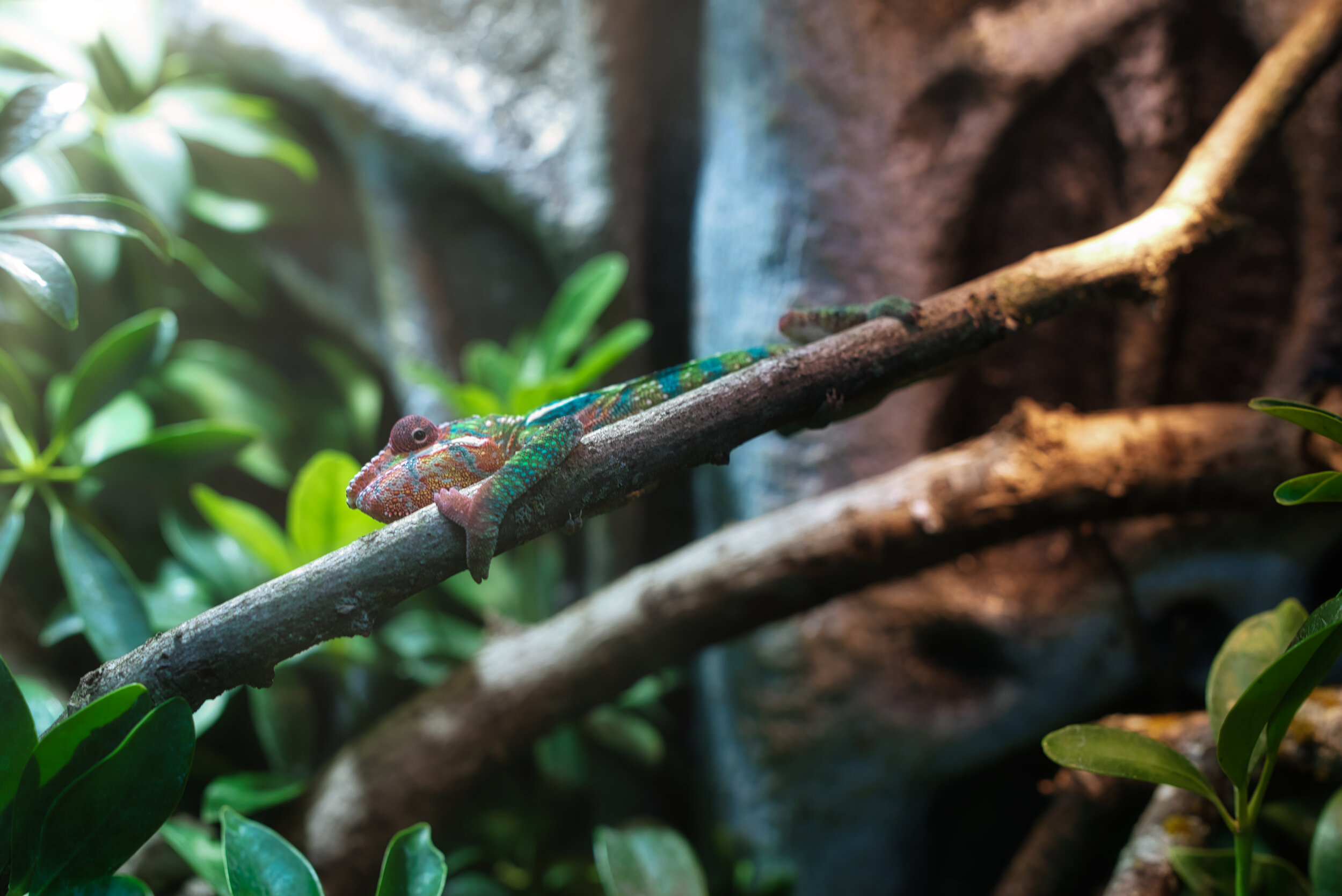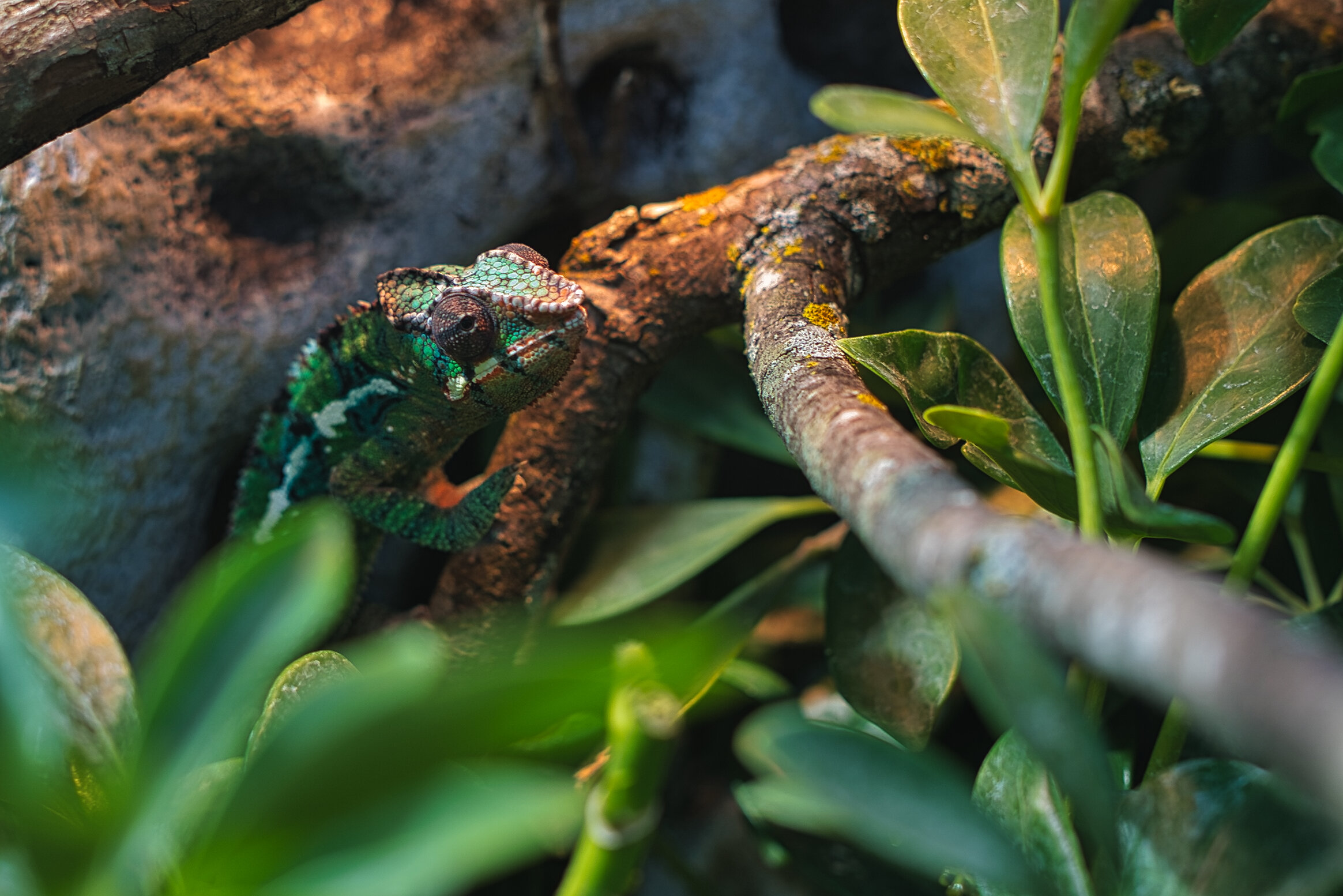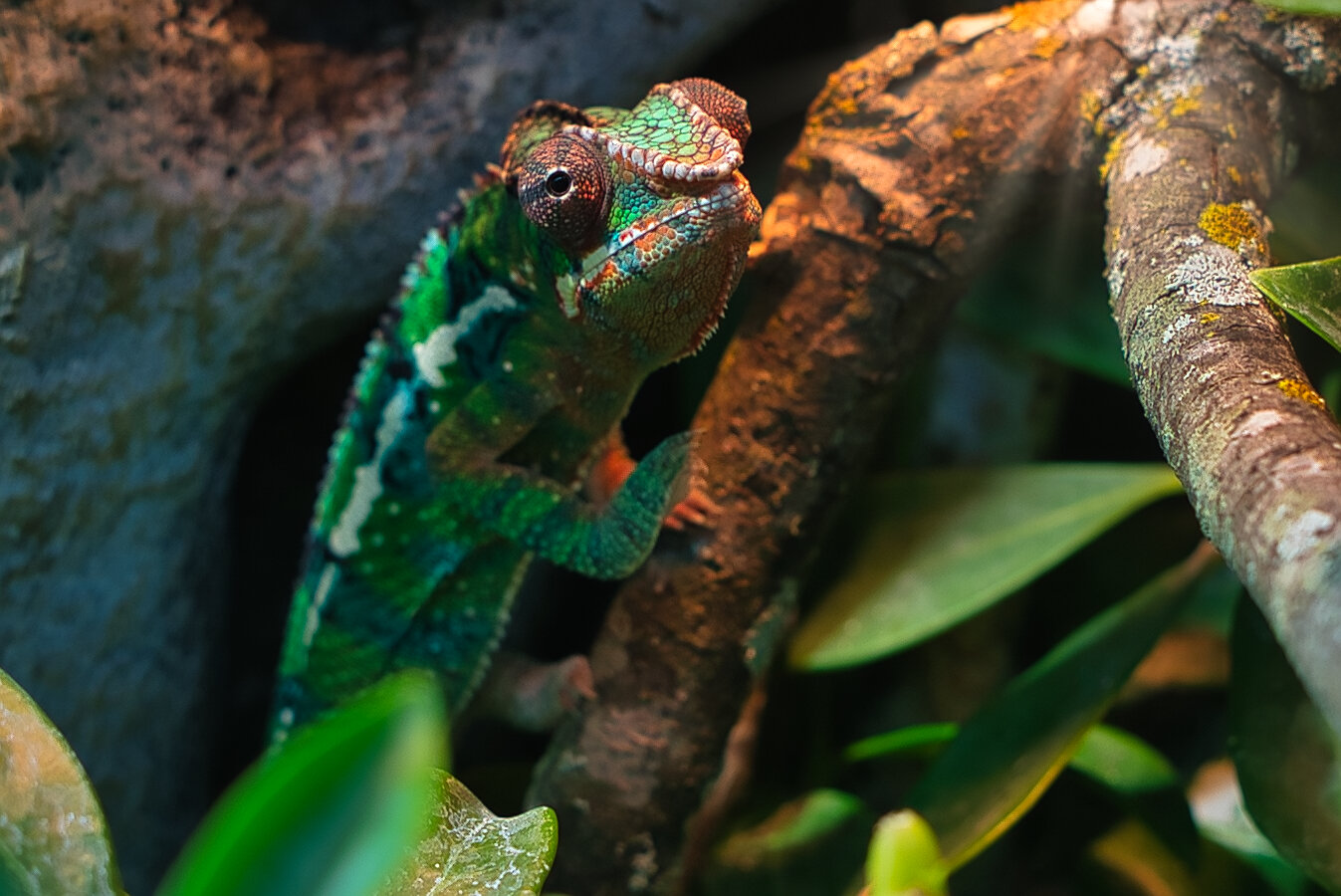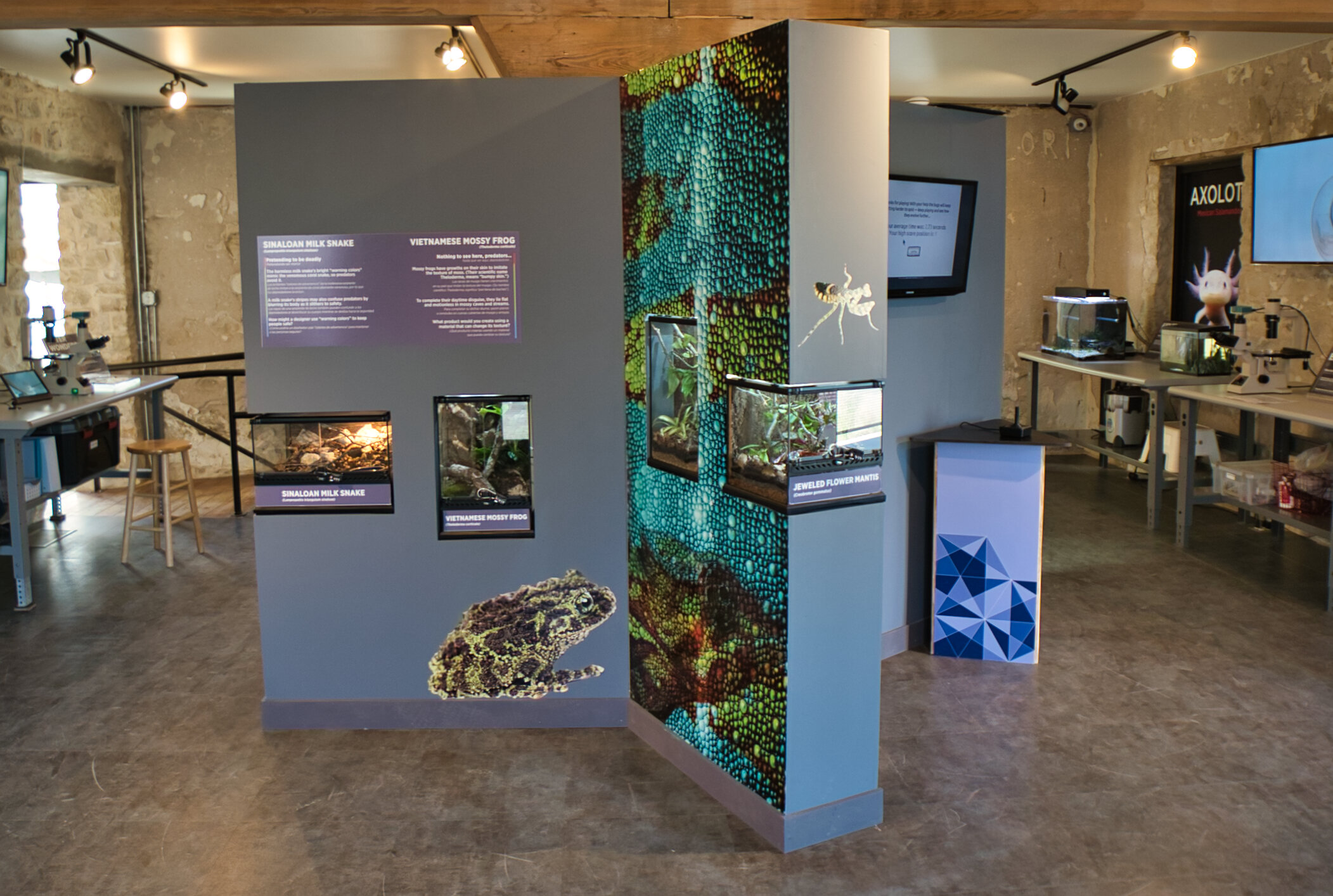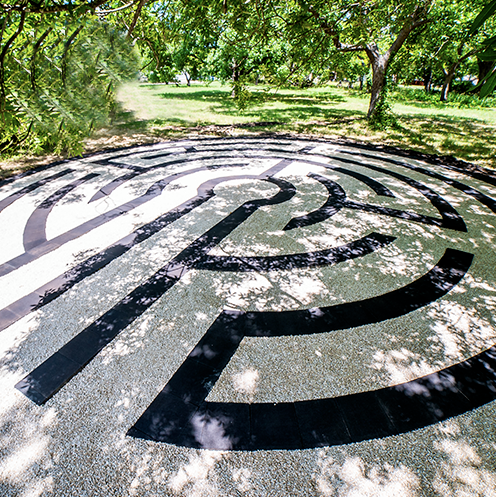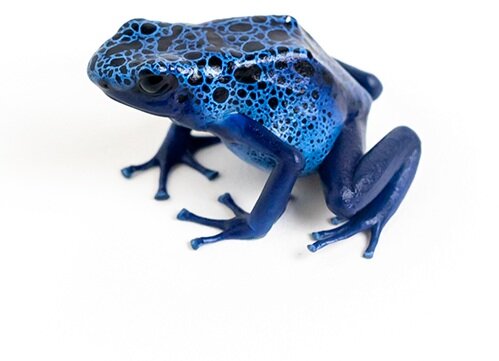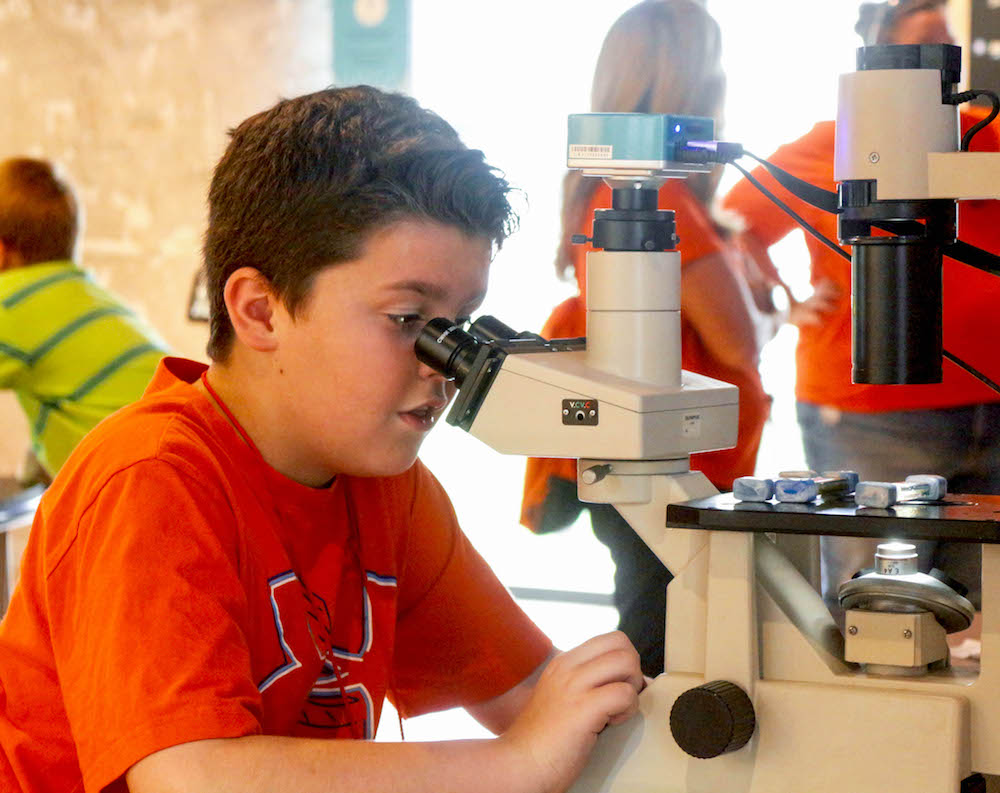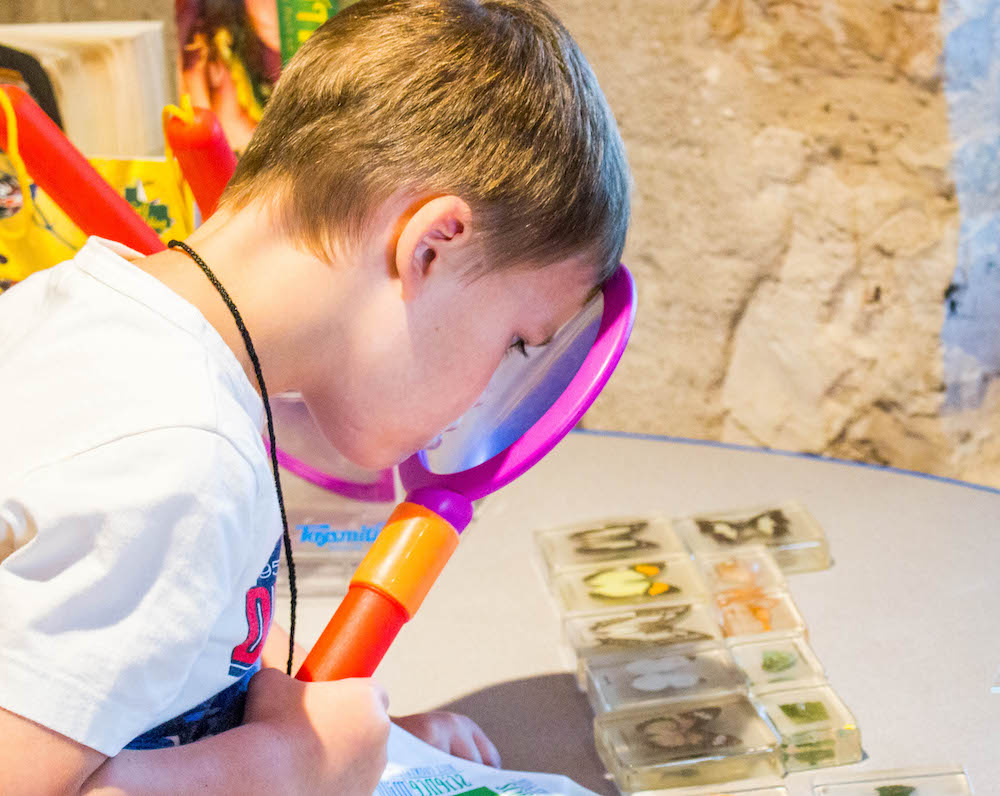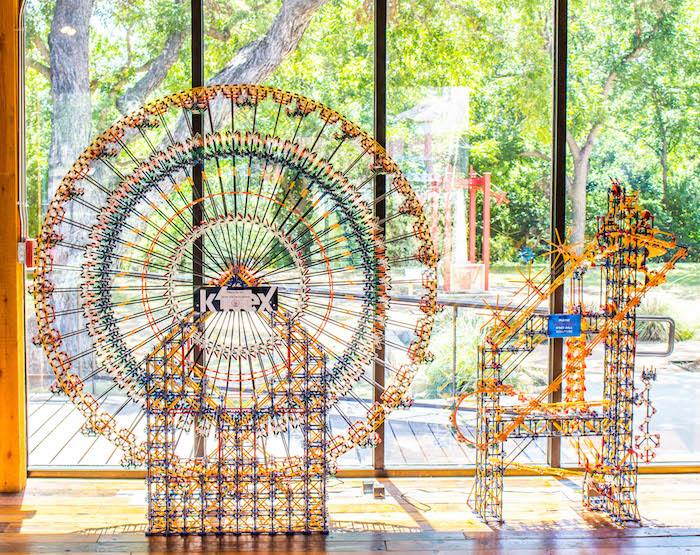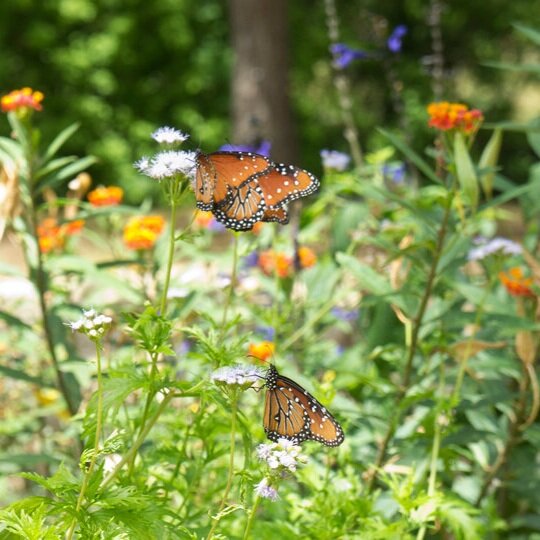Masters of Disguise
Meet the Masters of Disguise, the Science Mill’s newest exhibit. Bringing together live animals and STEM interactives, this exhibit invites you to take a closer look at the ways that animals blend in, stand out, confuse the eye or hide in plain sight.
Spot animals in their habitats and observe their amazing adaptations up close.
Try out touch-sensitive color-changing panels that use nanocrystals similar to a chameleon’s cells.
Capture “dazzlebugs” in a digital game that was designed by scientists to test theories about camouflage and movement.
Investigate specimens under a microscope to discover new details.
Meet the Masters of Disguise
We periodically update our live exhibits, so there may be new masters to meet when you visit!
Panther chameleon: Panther chameleons have special cells with tiny crystals that spread out or bunch up to reflect light as different colors. Chameleons send messages with their colors, such as “Danger nearby” or “Back off!”
Flying gecko: Pressed against a tree, a flying gecko’s skin flaps, webbed feet and flat tail help to hide the outline of its body. The flaps and webbing also allow it to glide (not fly) from tree to tree.

Vietnamese mossy frog: Mossy frogs have growths on their skin to imitate the texture of moss. To complete the disguise, they lie flat and motionless in mossy caves and streams.

Giant vinegaroon: Although harmless, these fearsome-looking arachnids are famous for their unique defense mechanism: shooting acetic acid (the main ingredient in vinegar) out of their backside!

Mexican hognose snake: To fool predators, hognose snakes play dead: they roll upside down with their mouth open and exude a foul stench. If flipped right side up, they will always roll back over again!
Dart Frogs: Bright colors advertise the dart frogs’ deadly talent: they produce a paralyzing toxin strong enough to kill larger predators. Scientists think the frogs store toxins from foods they eat in the wild. With a different diet in captivity, their poison never develops.
More Exhibits...



